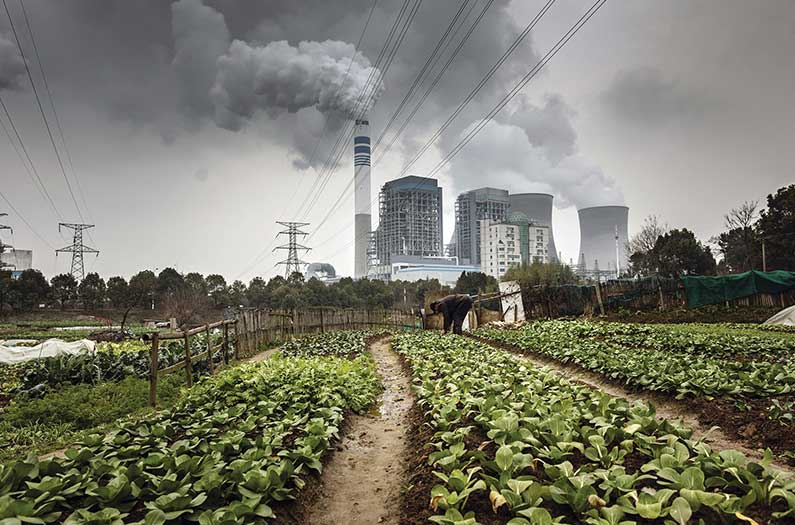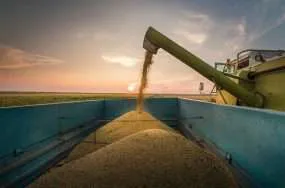The decline in coal in favour of natural gas across the United States has brought an unexpected bonus: an increase in crop yields. Appearing in The American Journal of Agricultural Economics, these findings reveal there were increases in both soybean and corn yields over an eight year period in the US, which was directly correlated with less coal pollution floating about in the air.
These findings incidentally are joined by another recent study, which also tracks the increase in production of wheat, soybeans, and corn related to a decline in coal. Together, both pieces of research provide a body of evidence that reveals just how closely a country’s energy policy can be tied to the health of its food systems.
Studying soybean and corn yields mainly across the Midwestern United States, the researchers on the first study found that between the 2003 and 2005, 2011 and 2013 – two periods of time when coal emissions were declining – corn yields improved by 2.5%, and soybeans by 1.7%. Together, this climb in yields led to an extra $1.60 billion produced each year. The majority of that increase – $1.07 billion – was attributed to corn.
Across the country, the regional effect varied. The state of Kentucky nabbed the biggest wins, with an estimated 7% yield increase in corn, and 4.3% in soybeans. This may come down to the fact that there was a higher number of coal plant closures in this region – creating an outsized benefit for some states. It’s also been established in previous research that coal pollution can be transported long distances, depending on the weather, so it’s possible that plant closures in some states transport the agricultural benefits elsewhere.
But how does less pollution actually amount to more crops? Electric coal plants emit large amounts of nitrogen oxides, a group of gases that, when exposed to sunlight, react with compounds in the air to produce an ingredient called ozone. Ozone has what could be likened to a choking effect on plants: once it enters the stomata, it slows photosynthesis and reduces plant growth. It also limits plant’ defences to disease, insects, and severe weather. When there’s less ozone in the air, however, it follows that a resulting boost in photosynthesis will cause a comparative increase in yields.
The second study, which was published in Nature Sustainability, looked at a different time period and an extra crop – wheat – but found similarly that the transition from coal to natural gas led to crop increases across the United States. Less pollution, the researcher calculated, led to an extra 570 million bushels of corn, soybeans, and wheat in the regions where plants were shut down. This amounted to roughly half a year’s production for these crops in the US. (That study also estimated the human health benefit of coal plant closures, finding that 26,610 lives were saved by the less-polluted air.)
However, the first study also found that despite all the accumulated benefits of reduced coal, the increase in crops didn’t actually amount to higher earnings for farmers. As a result of the greater availability of corn and soybeans, the price of these products decreased – but by more than production increased. That left farmers in the red – causing revenue losses of about $2.62 billion. Cleaner energy policy therefore may have unexpected losers, something that policymakers might need to consider, as they push for change.
The researchers made these connections by collating datasets on nitrogen oxide emissions and ozone measurements taken across the country over the study period, and combining them with county-level data on yields. They also included crop prices in their analysis to account for the possible impact of price changes on crop production. Combining all this data, they used a fixed-effects model, which excludes any random variables to enable them to establish a direct link between coal emissions and agricultural yields.
The benefits identified in both studies aren’t necessarily limited to soybeans, wheat, and corn: the switch from coal to cleaner fuels could be benefiting several other crops, and boosting our food systems in unexpected ways, say the researchers.
Viewed together, the two papers provide a convincing body of evidence on the surprising interconnectedness of energy and our food. “One way to increase land productivity is to reduce air pollution,” say the researchers on the first study, giving us an unusual new perspective on how we might meet the challenge of feeding the planet’s growing population.
Source: Metaxoglou et. al. “Productivity Spillovers From Pollution Reduction: Reducing Coal Use Increases Crop Yields.”American Journal of Agricultural Economics. 2019; and Burney, “The downstream air pollution impacts of the transition from coal to natural gas in the United States.” Nature Sustainability. 2020.
Photo: ©Bloomberg/Getty







